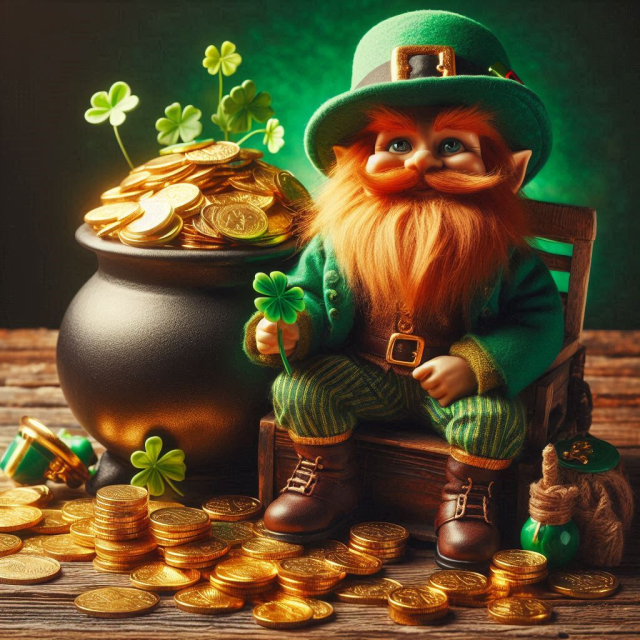Goblins have been protagonists of countless stories, legends and mythologies throughout human history. These mysterious creatures, known for their tiny appearance, mischievous nature and magical powers, have captured the imagination of people of all ages and cultures. In this article, we will explore in detail the fascinating world of elves, analyzing their origins, characteristics, roles in various cultural traditions, and the influence they have had on literature, film, and popular culture.
Origins and Mythology of the Goblins.
Leprechauns are creatures from European mythology, whose origins date back to the ancient beliefs and superstitions of Celtic and Germanic cultures. These creatures are believed to live in forests, fields and secluded places, where they engage in mischief and play pranks on humans. According to mythology, goblins are magical beings with supernatural abilities, such as the ability to turn invisible, transform into animals, and cast enchanting spells.
Characteristics and Appearance of the Elves.
Goblins are commonly described as small humanoid creatures, with a mischievous and playful appearance. They are usually short in stature, with wrinkled, pointed faces, long, pointed ears, and bright, shrewd eyes. They often dress in colorful clothing and wear pointed hats, giving them a charming and distinctive appearance. Although their appearance may vary depending on tradition and culture, elves are usually represented as agile and fast beings, capable of moving with great dexterity and speed.
Types of Goblins in World Mythology.
Throughout history, goblins have been classified into different types and categories, each with unique characteristics and abilities. Some of the most common types of goblins include:
Naughty Elves.
These goblins are known for their penchant for mischief and playing pranks on humans. They often hide in homes, where they may move objects, make strange noises, or cause other minor disturbances.
Guardian Goblins.
These elves are seen as protectors of nature and animals, and are believed to guard certain places, such as sacred groves or springs. They are said to bring good luck to those who respect their territory and show reverence towards them.
Home Elves.
These elves are the guardians of the house and family, and are believed to help with household chores and protect the home from dangers and bad influences. They are said to bring good fortune to those who treat them with kindness and respect.
Nature Goblins.
These elves are closely related to natural elements, such as water, fire and earth, and are believed to have magical powers over them. It is said that they protect the flora and fauna of the places they inhabit and punish those who damage the environment.
Legends and Traditions of Elves in Various Cultures.
Elves have been part of the folk traditions of many cultures around the world, from Europe to America, Asia and Africa. Each culture has its own stories and legends about these magical beings, which reflect the beliefs and values of society. Next, we will explore some of the most famous legends and deep-rooted traditions related to elves in different parts of the world:
Ireland: The Leprechauns.
Leprechauns are perhaps the best-known leprechauns in Irish folklore. These little creatures are famous for their ability to find and hide treasure, as well as their love of green shoes and clothing. It is said that if you manage to catch a leprechaun, it will grant you three wishes in exchange for its freedom.
Scandinavia: The Nisse.
In Norse mythology, the Nisse are household elves believed to inhabit farms and country houses. They are said to bring good luck to the residents of the house and protect the farm animals, but they can also play pranks on those who despise them or treat them badly.
Mexico: The Aluxes.
In the Mayan tradition of Mexico, aluxes are elves who live in the jungle and protect the flora and fauna of the forest. They are said to be mischievous but benevolent beings, who can help farmers with their crops and protect travelers lost in the forest.
Japan: The Tengu.
In Japanese mythology, Tengu are goblins who live in mountains and are associated with the wind and natural elements. They are depicted as humanoid creatures with bird-like faces and enormous wings, and are believed to possess magical abilities and occult knowledge.
The Representation of Elves in Literature and Cinema.
Goblins have been a constant source of inspiration for writers, filmmakers and artists around the world, who have explored their mysterious world in a variety of literary works, films and works of art. From the classic fairy tales of the Brothers Grimm to modern fantasy films like JRR Tolkien's "The Hobbit," elves have played important roles in narrative and popular imagination. Their charm and antics have made them loved and admired by people of all ages and cultures.
Leprechauns are fascinating creatures that have captured the imagination of humanity for centuries. From their humble origins in European mythology to their presence in cultural traditions around the world, elves have been symbols of mystery, magic and wonder. Although its existence remains the subject of debate and speculation, its legacy lives on in the stories we tell, the traditions we follow, and the imaginations we fuel. In a world full of uncertainty and challenges, elves remind us of the importance of keeping the spark of fantasy and creativity alive in our lives.






